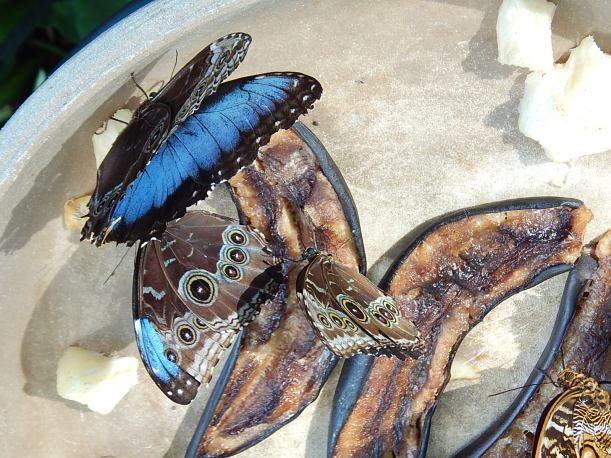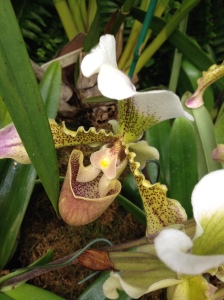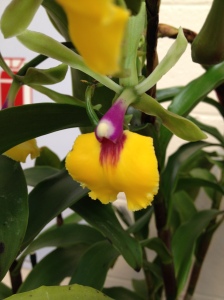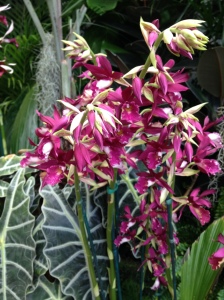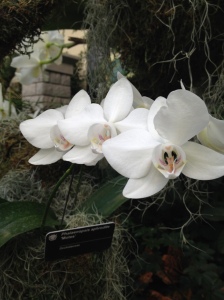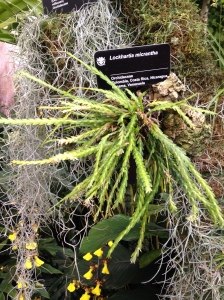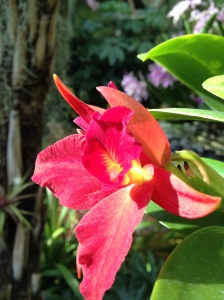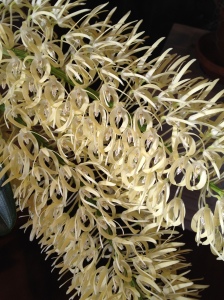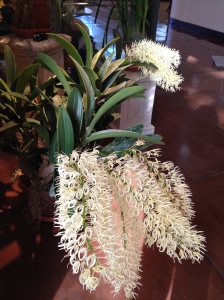 Gardener or not, a visit to the Missouri Botanical Garden is a pleasant way to while away an afternoon. Today’s overcast skies were perfect for viewing all the vibrant blooms.
Gardener or not, a visit to the Missouri Botanical Garden is a pleasant way to while away an afternoon. Today’s overcast skies were perfect for viewing all the vibrant blooms.
Right now my favorite area is the Kemper Home Gardening Center and its associated demonstration gardens. Here you can see all sorts of containers, butterfly gardens, kitchen gardens and the All American Selections demonstration. It’s a great place for inspiration and ideas.
If there’s one theme I’d give the garden this summer it would be lush and high-contrast. Plantings with hot shades of purple, green, yellow and orange that contrast with dark hues of black like the giant grass below are common. I don’t know the name of this tall purple grass paired with vinca but it’s spectacular.
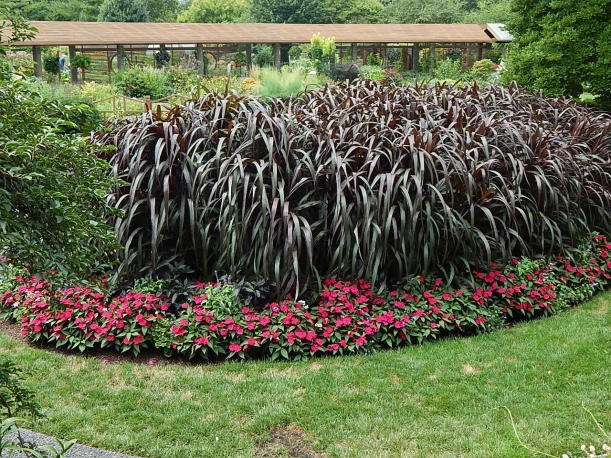
Green and black elephant ears surround a mass bed of lipstick pink vinca. As you can see, vinca grows quite well in our summer heat. So do the elephant ears. Keeping to the purple and black theme, how about these tomatoes? They’re called Indigo Rose tomatoes. I’d never seen an artichoke growing until today.
Keeping to the purple and black theme, how about these tomatoes? They’re called Indigo Rose tomatoes. I’d never seen an artichoke growing until today.


I’ve seen lots of posts on Pinterest for pallet gardens. This one is on steroids.
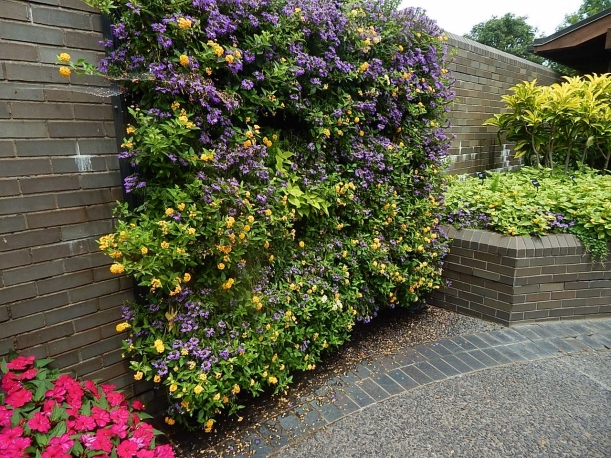
Coleus is predominant in many groupings. Here maroon coleus–accented with chartreuse coleus–rises above coral toned vinca. This is one side of the entrance to the children’s playground and you pass it on the Kemper Center. The large haybasket probably weighs a lot and such a structure would most likely pull down my fence. Here it has plenty of support.

All is not pink, purple and black in the garden. The garden designers are far more versatile. This collection of black eye Susans and ornamental millet is an interesting combination of form and texture. I like the cat-tail bloom on the millet. I’ve not seen this in a nursery here but would try it in a container next year.

Of course, there are lots of black eyed Susan cultivars in the cutting garden.

The Japanese garden with its tranquil lake and gently sloping hills lies beyond the demonstration gardens in the further reaches of the garden. It’s a nice place to sit and relax or feed the carp. In spring, blooming azaleas and dogwoods make this section of the garden a popular destination. Here you can enjoy a large selection of pines, dogwoods, barberries and maples.
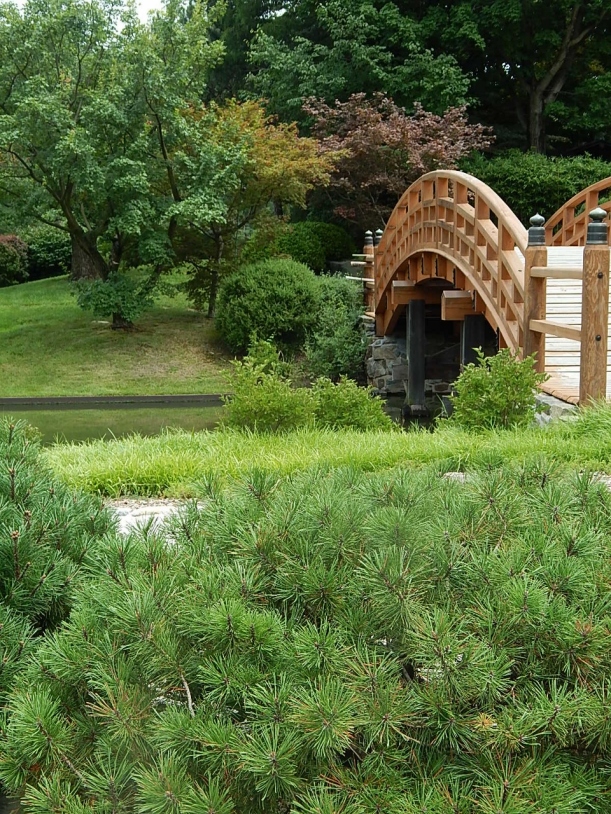

Winding my way back to main entrance, and continuing on the tranquil vibe, I made a leisurely stop at the Bakewell Ottoman Garden, a small walled garden planted in the gardening tradition of the Ottomans. Istanbul, which was home to the Imperial capital of the Ottoman Empire, and St. Louis lie on the roughly the same latitude, which means we can grow a lot of the same plants.

Apparently there are no surviving types of this style garden, which was developed between the 16th and 19th centuries. The plantings here are primarily naturalized or native to Turkey. Hard fruits such as pomegranate and Meyer lemons are planted in pots throughout the garden. Currently, alternating pink and white beds of dianthus are bordered by germander but the garden is well known for its Turkish tulip and bulb display in the spring.

Oleander and columbine line one wall of the garden. The fountain is inviting and looks refreshing on a hot summer day.

A mass of shasta daisies sway in the breeze. 
Although I live just 15 minutes from this city jewel, I don’t get there near enough. Today, I am glad I took the time
 There’s nothing like a tropical vacation. Needing a little heat and humidity, I dashed off to west St. Louis County on Saturday–two grandchildren in tow–to take in the fluttering wonder of the Blue Morpho butterfly in the tropical environs of the Sophie M. Sachs Butterfly House.
There’s nothing like a tropical vacation. Needing a little heat and humidity, I dashed off to west St. Louis County on Saturday–two grandchildren in tow–to take in the fluttering wonder of the Blue Morpho butterfly in the tropical environs of the Sophie M. Sachs Butterfly House.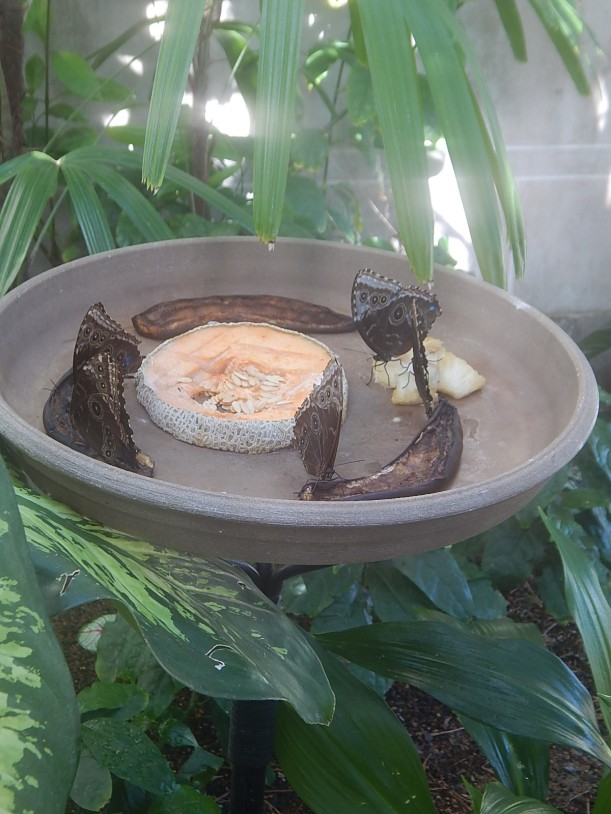 The morpho is a brilliant blue butterfly who lives in the tropical rainforests of Latin America. And the Butterfly House is involved in conservation efforts of this butterfly with Costa Rica. Before entering the conservatory, the docent told us the butterflies were particularly active because it was a bright sunny day. She wasn’t kidding. Nearly 1,500 blue morphos are taking flight throughout March and they were everywhere. They are fast fliers so it was hard to capture them flying.
The morpho is a brilliant blue butterfly who lives in the tropical rainforests of Latin America. And the Butterfly House is involved in conservation efforts of this butterfly with Costa Rica. Before entering the conservatory, the docent told us the butterflies were particularly active because it was a bright sunny day. She wasn’t kidding. Nearly 1,500 blue morphos are taking flight throughout March and they were everywhere. They are fast fliers so it was hard to capture them flying.